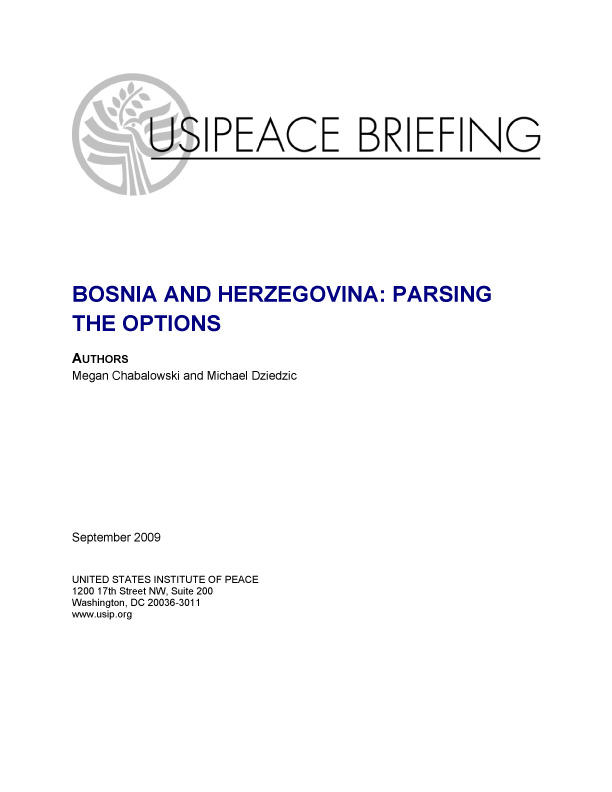USIP assesses several policy prescriptions and the areas of disagreement and agreement of how the international community and the region itself should address the problems in the struggling country.

Overview
As ethnic tensions heat up in the former Yugoslavia, more attention is given to how to address the problems and prevent a return to violence in the fledgling state of Bosnia and Herzegovina. At issue are Bosnia’s current conditions and what to do about them: Is the country on a trajectory toward instability and violence, or is it making hesitant progress? What is needed to overcome ethnic tensions between Bosnia’s political leaders and how can the international community induce them into productive negotiations over reforms? What should the U.S.’s role be in Bosnia’s integration process into the EU? In a new report, USIP assesses several policy prescriptions, and their areas of disagreement and agreement of how the international community and the region itself should proceed. These policy recommendations come in recent Peace Briefs entitled “Unfinished Business in Bosnia and Herzegovina: What is to be Done?” by Kurt Bassuener and James Lyon; “What to do About Bosnia and Herzegovina?” by Edward Joseph; and “U.S. Policy and Bosnia and Herzegovina: An Assessment,” by David Binder, Steven Meyer and Obrad Kesic, as well as one by James O’Brien, principal of the Albright Stonebridge Group, also a former U.S. presidential envoy for the Balkans in the 1990s, and a public event on June 25, 2009.
Read the full text (PDF/188.62 KB)
About the Authors
This USIPeace Briefing was written by Michael Dziedzic, a senior program officer in the Center for Post-Conflict Peace and Stability Operations at the United States Institute of Peace, and Megan Chabalowski, a program assistant in the center.